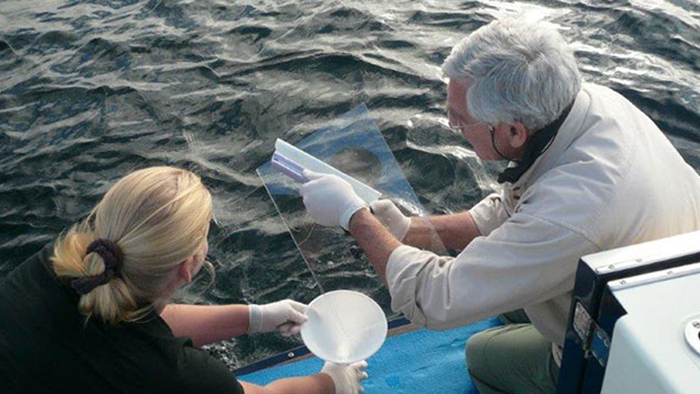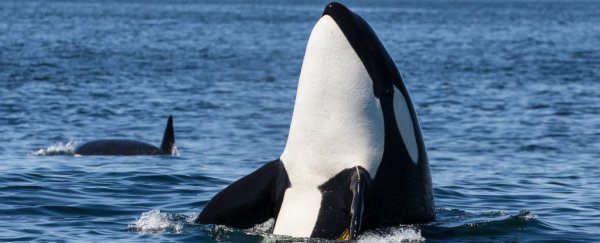Scientists studying endangered populations of orcas along the US and Canadian Pacific coast have discovered bacteria and fungi that could be responsible for their low numbers in region, and human activity might be to blame for some of these infections.
Using long aluminium poles with petri plates attached, a team from the University of British Columbia in Canada has been able to collect 26 samples from the blowholes of whales as they surface above the water to exhale air.
These samples are giving scientists a greater insight into the microbiome and health of the whales – something that's tricky to do while they're in the wild.
"We wanted to find out what sort of bacteria and fungi represent in healthy whales and the potential pathogens they are being exposed to in their environment," explains lead researcher Stephen Raverty.
"In some circumstances, these pathogenic microbes could pose a threat to the animals and contribute to clinical disease."
After analysis, the samples were found to contain bacteria such as Staphylococcus aureus and Salmonella, both known to cause diseases in humans and other animals. Potentially harmful fungi such as Penicillium and Phoma also turned up.
The team is now comparing the findings to samples taken from whale autopsies – or necropsies – and plan to continue their sampling to track the health of the whales over time.
What's not yet clear is how harmful these microbes could be for the whales, but it's a good starting point for finding out.
Researchers also found evidence of antibiotic resistance in some of the bacteria samples, possibly related to sewage pumped out into the ocean from the nearby Canadian city of Victoria, which has a population of around 360,000 people.
Whether these microbes are occurring naturally in the marine environment or appearing as a result of human activity is another question the team wants to answer.
"These animals are long ranging and as they migrate along the coast, they are exposed to agricultural runoff and urban discharge which may introduce a variety of microbes into the water," says Raverty.
 Credit: Pete Schroeder
Credit: Pete Schroeder
With 78 killer whales currently in this group, down from over 100 in the 1990s, the mammals face a number of threats, including increased shipping traffic, reduced numbers of prey, and water pollution.
Bacteria and fungi are only a part of that overall picture, but the more that scientists know about whale health, the easier it is to work out how these creatures are faring – and what we can do to improve the environment they're living in.
These findings will also help scientists evaluate the impact of future events, like oil spills, on whale health.
"Assessing whether animals are healthy or sick is virtually impossible to do for live animals as big as whales," says director of the Marine Mammal Research Unit at UBC, Andrew Trites, who wasn't involved in the study.
"Raverty and his colleagues found a way to assess health by collecting microbiota and pathogens when the whales exhaled between dives. It is an ingenious way to give whales a check-up."
The research has been published in Scientific Reports.
